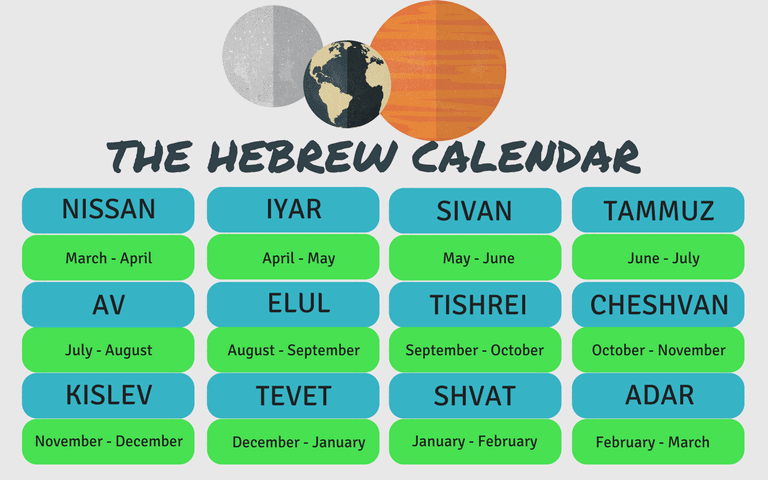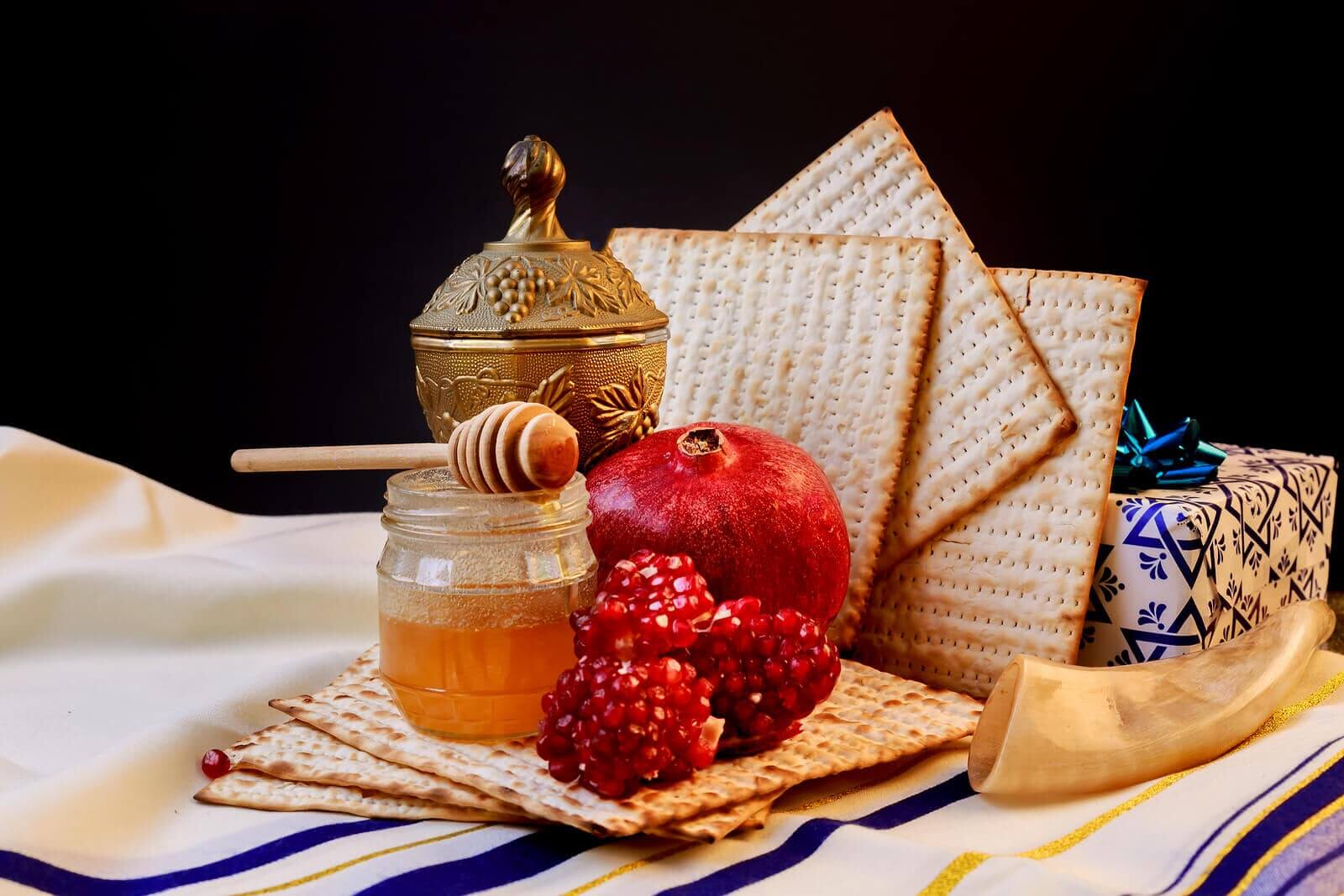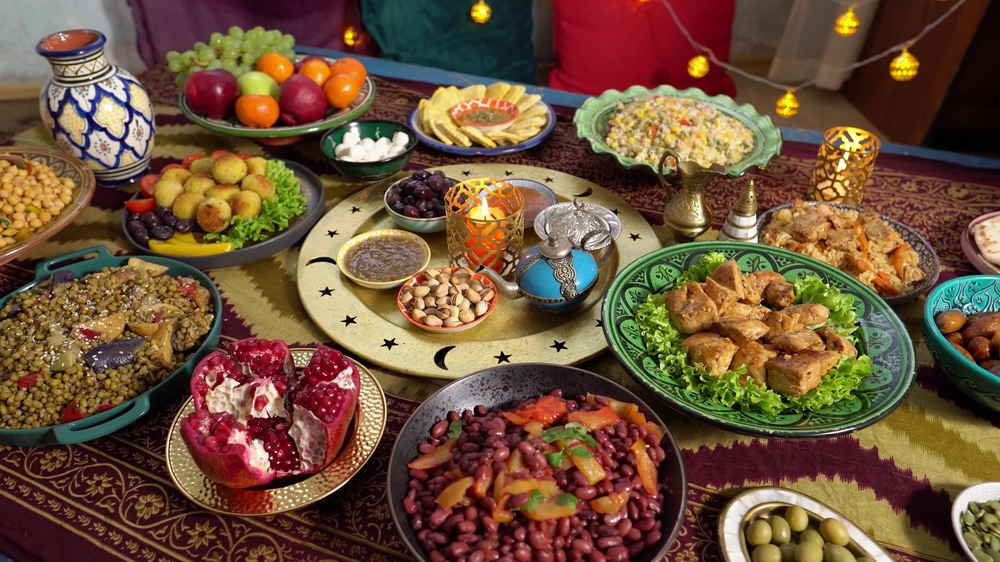
The Hebrew calendar is like a window into the Jewish way of life. The pillars of the calendar are the high holidays, the building blocks are the days, marked by daily commandments upon every Jewish man and woman to comply with, and the weeks, marked by the Sabbath. Teaching your children about the Jewish calendar is a way to teach them about the Jewish way of life.
The Hebrew calendar can, however, be a bit confusing. It’s a lunar calendar where each day represents the rotation of the earth on its axis, a month represents the revolution of the moon around the earth, and a year represents the revolution of the earth around the sun. Put simply, the month on the Hebrew calendar starts with the smallest sliver of the moon and lasts 29-30 days and there are 12-13 months in a Jewish calendar year. It’s further complicated by the fact that the first month of the year falls around March. While the dates of Jewish holidays don’t change from year to year on the Hebrew calendar, the Jewish year is not the same length as the civil Gregorian calendar, and thus the dates of the Jewish calendar don’t match up with the civil one.
Your kids probably don’t need to know the nitty gritty of how the Hebrew calendar is calculated, how it’s adjusted each year to account for the 12-13 months in a given year (hint, a leap year is the fix) or even the astronomy behind following the lunar calendar.
There are 3 things you can teach your kids about the Hebrew calendar and they’ll be well on their way to knowing what they need to know (here, you can find aonther 10 practical ways to lead jewish life in America).
1. What are the months of the Hebrew calendar
Before going into any details, start with the basics. Teach your kids the months of the Hebrew calendar. The best way to help remember them is to know what months from the civil calendar they fall on.

2. What holidays fall on what months
Here’s your golden opportunity to teach your kids a bit about the major Jewish holidays that are important to the Jewish religion. The calendar is an organized vehicle by which you can lay out, month by month, what holidays Jews celebrate. Use this as a way to delve into what these holidays are all about, why we celebrate them and how. Alternatively, if your kids have the Jewish holidays down pat, work backwards.Start with the holidays and put a timeframe on them using the Hebrew calendar. For more on teaching your kids about the Jewish holidays, check out What Your Children Must Know About the Jewish Holidays.

Here are a few examples you could start with:
- Passover: Passover is a spring holiday and falls on the 15th day of Nissan. It marks the story of Exodus, in which the Israelites were freed from slavery in Egypt and led to freedom by Moses.
- Shavuot: Shavuot is also a spring holiday and falls on the 6th day of Sivan. It always falls exactly 7 weeks after Passover. It commemorates the anniversary of the day that the Torah was given by God to the Israelites that were camped at Mount Sinai. Shavuot is also a very much tied to the land of Israel. It marks the wheat harvest in the land of Israel. And thus, this holiday is an opportunity to harken to the land and celebrate what the land gives us – fruit, wheat, vegetables and more.
- Rosh Hashana: Rosh Hashana is a fall holiday and falls on the first day of Tishrei. Despite being the start of the Jewish new year, Tishrei is the 7th month in the Hebrew calendar. It is the start of the Civil new year and the date on which the year number advances.
3. How to figure out the corresponding civil dates for the Jewish calendar in any given year
The mathematical calculations behind this aren’t simple. It’s in fact more complicated than just understanding the lunar rhythm. It requires an understanding of the Jewish laws and customs around how the calendar is set and being familiar with why and how these dates were set during biblical times. Suffice to say that your kids probably aren’t interested in diving that deep (and if they were, you probably wouldn’t know how to explain it to them ). So, plan B is a little lazier but efficient nonetheless. Google.
You can google any Jewish holiday along with the corresponding civil calendar year and find out when it falls this year. So, for example, if you’d like to know how much time you have to plan the menu for your Passover Seder, or how long you have to be in denial that your husband’s entire family is coming over, just google “Passover 2018” and like magic, you’ll see that it falls on Friday, March 30th 2018.
The best way to teach your children about the Hebrew calendar is to go through the basics. Tie it to the holidays they know and love so that it’s not a boring lesson. Who knows, they may be curious why Rosh Hashana doesn’t fall on the same date every year, and now they’ll know why.










